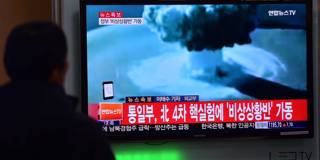Today, a new and perhaps more dangerous type of nuclear proliferation is underway. Call it vertical proliferation: the mounting effort by existing nuclear powers, particularly China but also Russia and the US, to upgrade their nuclear arsenals to allow them to act with impunity in pursuing their interests.
NEW YORK – Mention “proliferation” and most people will assume that you are talking about the spread of nuclear weapons. For good reason. Nine countries (China, France, India, Israel, North Korea, Pakistan, Russia, the United States, and the United Kingdom) possess them. But many more have the ability and conceivably the motive to produce them. There is also the danger that terrorist groups could obtain one or more of these weapons, enabling them to inflict horrific damage.

NEW YORK – Mention “proliferation” and most people will assume that you are talking about the spread of nuclear weapons. For good reason. Nine countries (China, France, India, Israel, North Korea, Pakistan, Russia, the United States, and the United Kingdom) possess them. But many more have the ability and conceivably the motive to produce them. There is also the danger that terrorist groups could obtain one or more of these weapons, enabling them to inflict horrific damage.